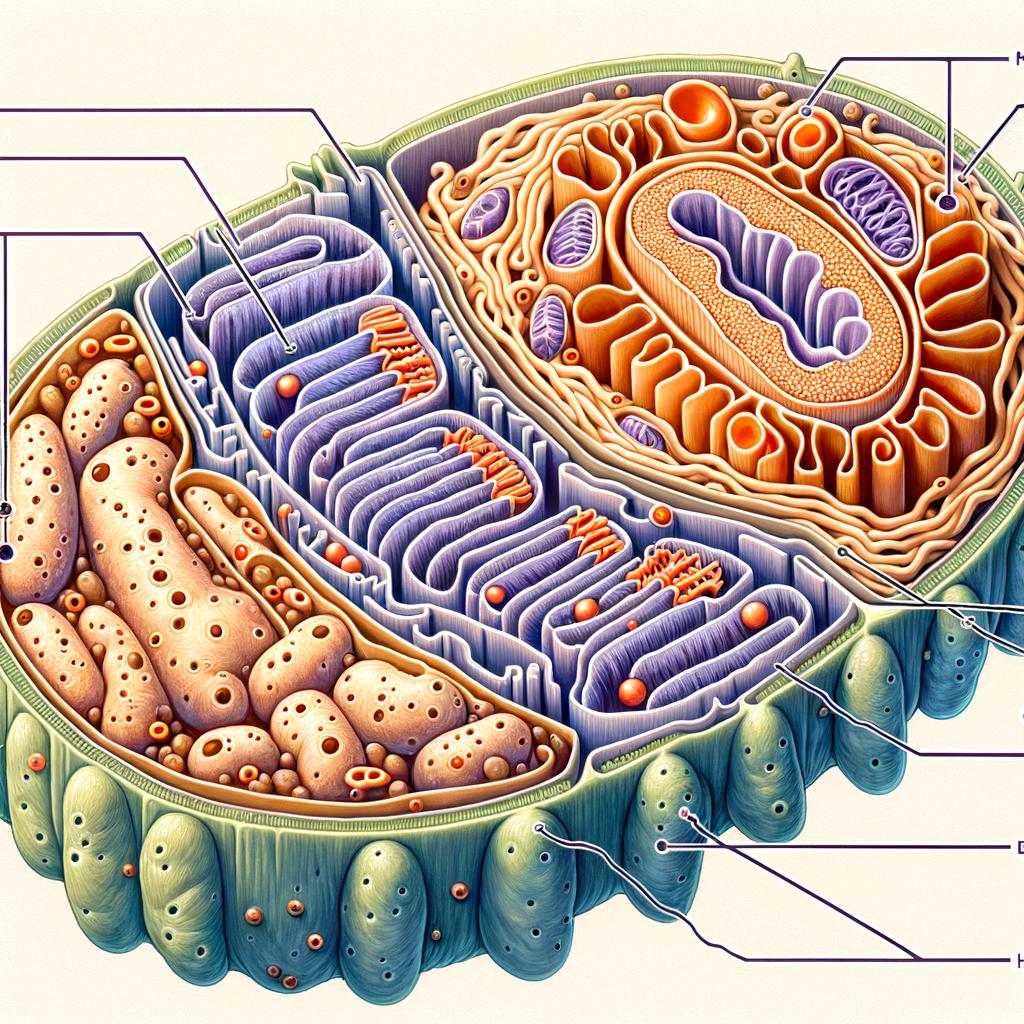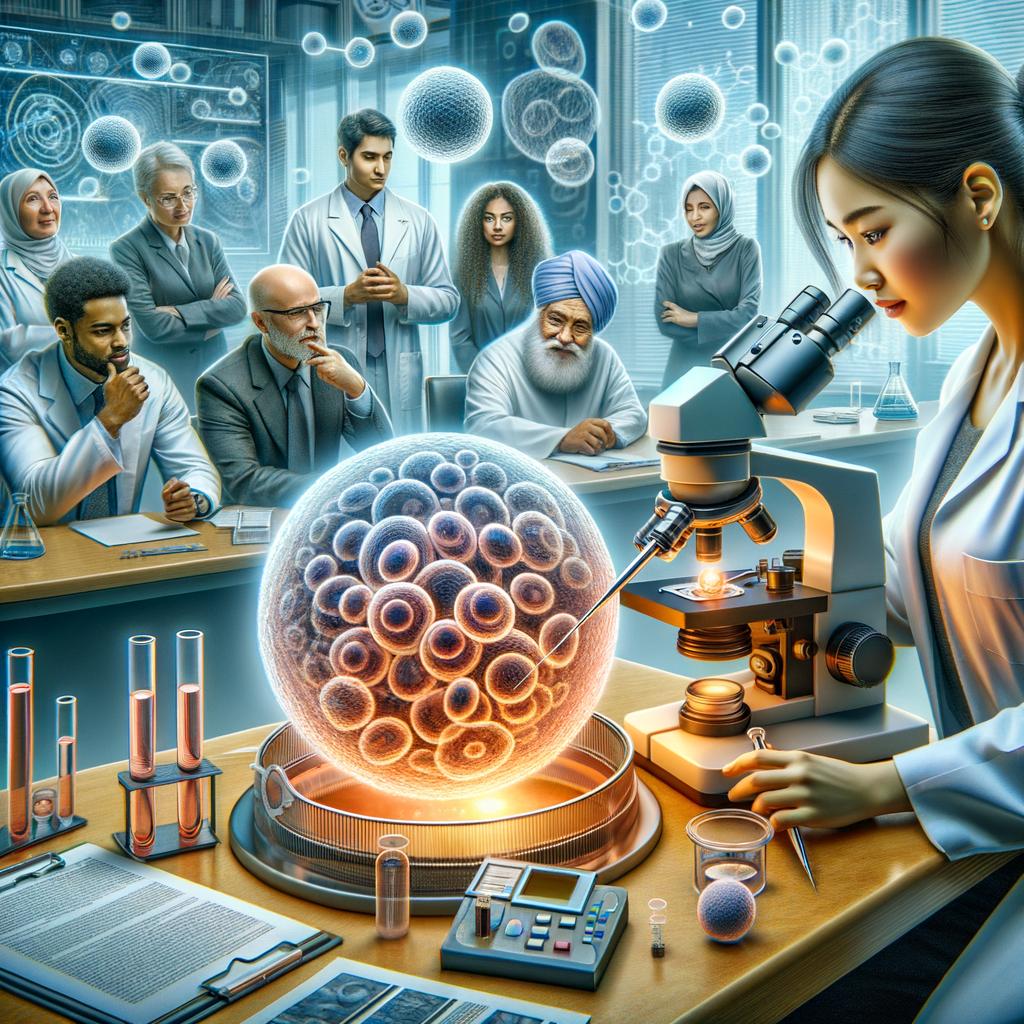Fasten your seatbelts and prepare to dive headfirst into the mysterious universe within our cells, where the energetic centers called mitochondria reside, orchestrating the energy production for all of our biological functions. In this blog post, we’re exploring the groundbreaking insights from Dr. Gleicher, a leading authority on fertility treatment, who demystifies the role of CoQ10 – a renowned supplement used extensively in fertility treatment for both men and women. We’ll delve into CoQ10’s intriguing relationship with our cells and how it may significantly affect egg production and mitochondrial health in women, especially as the clock of life ticks on. Oh, and we promise no lab coat or advanced biology degree is required to join this thrilling expedition! So, are you ready to crack the code yet
Table of Contents
- Understanding CoQ10’s Role as an Antioxidant in Infertility Treatments
- Mitochondria: The Energy Source of Cells and their Significance in Aging
- Revitalizing the Mitochondrial Function in Eggs to Improve Pregnancy Chances
- Experimenting with Cytoplasmic Exchange for Better Egg Performance and its Controversy
- Debating on the DNA Role of Mitochondria in Cytoplasmic Exchange
- Q&A
- In Retrospect
Understanding CoQ10’s Role as an Antioxidant in Infertility Treatments

Today, we unravel the mystery of CoQ10’s role in infertility treatments and its impact on egg production and mitochondrial health. Commonly used in both female and male infertility treatments, CoQ10 is not a hormone but an antioxidant, a substance that counters harmful processes in body cells.
Every living cell in our bodies requires energy, provided by tiny structures called mitochondria. These are of critical importance as they seem to decline in functionality with age. A credible hypothesis suggests that improving mitochondrial function in older women would increase egg performance and, consequently, improve chances of pregnancy.
The mature egg is the largest cell in a woman’s body, and it needs the most energy. Therefore, it has the highest number of mitochondria. About 15-20 years ago, some scientists suggested cytoplasmic exchange. The idea is to replace the potentially underperforming mitochondria in older women’s eggs with mitochondria of a younger woman. The mitochondria reside in the cytoplasm – the fluidated area surrounding the nucleus of any cell.
Table: Understanding Cytoplasmic Exchange
| Term | Description |
|---|---|
| Mitochondria | Tiny structures in every cell providing energy |
| Cytoplasm | The fluid surrounding the cell nucleus in which mitochondria reside |
| Cytoplasmic Exchange | Proposed method to replace underperforming mitochondria in older women’s eggs with mitochondria from a younger woman to improve egg performance |
Interestingly, mitochondria are the only structures in our cells that carry DNA outside the nucleus. They contain what’s known as mitochondrial DNA, in distinction to nuclear DNA. However, when the FDA intervened in trials attempting cytoplasmic exchange, citing the mitochondrial DNA, this practice was prohibited.
Mitochondria: The Energy Source of Cells and their Significance in Aging

The job of CoQ10, an antioxidant which is not a hormone, is to counteract unhealthy processes in cells and work to “recharge the batteries”. Our cells are alive and require energy – energy supplied by microscopic structures known as mitochondria. These are crucial for our cells and therefore our overall health, providing the energy all cells require. But here’s the catch – it’s been observed that mitochondrial function seems to decline as we age.
The mature egg – the largest cell in the female body - houses the largest number of mitochondria due to its hefty energy demands. Therefore, it would stand to reason that should mitochondrial function in older women be improved, it would lead to enhanced performance of eggs, and subsequently, increased chances of pregnancy. This idea spurred several researchers some 15-20 years ago to suggest “cytoplasmic exchange”, an attempt to replace aging mitochondria in eggs with youthful ones. However, the Food and Drug Administration stepped in and prohibited this due to the fact that mitochondria are unique in possessing their own DNA outside the nucleus, dubbed “mitochondrial DNA”.
| Cell Part | Description | Significance |
|---|---|---|
| Mitochondria | Microscopic structures providing energy to every cell | Crucial energy source, function appears to decline with aging |
| Mature Egg | Largest cell in a female body with the highest count of mitochondria | Has high energy demands, likely improves performance and chances of pregnancy with improved mitochondrial function |
Revitalizing the Mitochondrial Function in Eggs to Improve Pregnancy Chances

Coenzyme Q10, most commonly known as CoQ10, plays a crucial role in fertility treatment due to its antioxidative properties. These properties help to protect and renew the cellular energy factories – the mitochondria. Not restricted to just normal cells, this antioxidant actively recharges our eggs cells, which are distinctive due to their size and energy requirement. To ensure successful fertilization and increase pregnancy chances, mitochondria and their optimal function hold significant importance.
Years ago, the concept of ‘cytoplasmic exchange’ was brought to light. This experiment encompassed the idea of replacing mitochondria of older women’s eggs with mitochondria from younger women. The aim was clear – to improve the overall performance of the egg due to a possibly deteriorated function of mitochondria in the older women. The primary location of the mitochondria, the cytoplasm (also known as the fluid-filled recess surrounding the nucleus of a cell) was of great interest in this exchange. Despite the theoretical success of the process, this experiment was prevented by the Food and Drug Administration on the grounds of potential DNA misdistribution as the mitochondria are the only cell structures that possess their own DNA, known as ‘mitochondrial DNA’. Although mitochondrial DNA makes up less than 1% of the total DNA, it was still considered a critical element in this procedure. Consequently, CoQ10, with its mitochondrial energizing capability, remained the most popular solution for potentially improving egg quality, fertilization rate and overall pregnancy chances.
Experimenting with Cytoplasmic Exchange for Better Egg Performance and its Controversy

Emanating from the insightful commentary by Dr. Gleicher, the concept of enhancing mitochondrial function in older women to improve egg performance has stirred a lot of attention in the scientific fraternity. Integrating the non-hormonal antioxidant CoQ10 into infertility treatments aims to optimize energy within cells, providing a boost to processes impacted by aging. Eggs, being the largest cells with the most mitochondria, theoretically could perform better with an enhanced energy output. This is more substantial in older women, wherein a decline in mitochondrial function could be augmented.
However, this seemingly promising avenue ran into a wellspring of controversy when attempts were made to conduct a cytoplasmic exchange, replacing the mitochondria in the egg cells of older women with those of younger women. The FDA stepped in to halt this process due to implications tied to the exchange of mitochondrial DNA.
| CoQ10 | Importance |
|---|---|
| Antioxidant | Counteracts unhealthy processes in cells |
| Mitochondrial Aid | Aids in providing energy to cells, potentially improving egg cell performance |
| Cytoplasmic Exchange | Could enhance mitochondrial function in egg cells of older women |
The central concern stemmed from the fact that the mitochondria are the sole structures in our cells to house DNA outside the nucleus. Despite the mitochondrial DNA constituting less than 1% of the total DNA load, introducing a foreign DNA unit into a patient’s system inherits potential risks, leading to the FDA prohibition. This fascinating yet complex issue continues to fuel academic discussion as we strive towards understanding and unlocking the untapped potential within egg cell performance.
Debating on the DNA Role of Mitochondria in Cytoplasmic Exchange

The intriguing role of mitochondria within the body of a woman, especially its functioning in relation to oocytes, is a relatively unfamiliar zone to most people. To begin with, it is important to realize that the egg, which happens to be the largest cell of a woman’s body, necessitates the highest amount of energy. Consequently, this cell tends to harbor the highest quantity of mitochondria among all other cells in the female body.
The prospect of rejuvenating the mitochondria in older women has been a subject of significant scientific debate. There was a fascinating proposal suggesting the replacement of failing mitochondria in the eggs of older women with mitochondria from younger women. Named “cytoplasmic exchange”, this concept engendered a crucial question about the potential of enhancing the performance of older eggs.
| Key Element | Details |
|---|---|
| Supplement | CoQ10 |
| Role of CoQ10 | Regarded as an ‘antioxidant’ |
| Importance of Mitochondria | Provides energy for cells, numerous in ‘egg cells’ |
| Role in Eggs of Older Women | Potentially improving mitochondrial function leads to better eggs production |
However, attempts to operationalize this practice by a group of researchers in New York were stopped by the FDA. The rationale behind the intervention revolved around the discovery that mitochondria surprisingly house their unique DNA outside the cell nucleus, albeit contributing less than 1% of the total DNA amount. Therefore, swapping cytoplasm with mitochondria raises key questions about DNA and hereditary aspects. Throughout the ongoing inquiries, CoQ10 has emerged as noteworthy due to its ‘antioxidant’ nature and potential role in cell energy management.
Q&A
Q: What is CoQ10 and what is its role in infertility treatment?
A: CoQ10 is a supplement widely used in both female and male infertility treatment. It is not a hormone but an antioxidant that counteracts unhealthy processes in cells. CoQ10 helps recharge the batteries in cells by providing energy to the mitochondria, which are tiny structures in each cell.
Q: Why are mitochondria important, especially in relation to female infertility?
A: Mitochondria are crucial for the overall function of our cells, as they provide the energy needed by our cells. However, as we age, the function of mitochondria tends to decline, which could potentially affect female fertility. It is hypothesized that by improving mitochondrial function in older women, their eggs could perform better and lead to better pregnancy chances.
Q: Why do eggs need a lot of energy?
A: The mature egg is the largest cell in a woman’s body and therefore requires the most energy. As a result, it has the largest number of mitochondria in the body.
Q: What is “cytoplasmic exchange” and why was it prohibited by the FDA?
A: “Cytoplasmic exchange” refers to the idea of replacing the mitochondria in an older woman’s eggs with the mitochondria of a younger woman. This procedure was prohibited by the Food and Drug Administration (FDA) because mitochondria are the only structures in our cells that have their own DNA, called mitochondrial DNA. The FDA intervened because the exchange of cytoplasm with mitochondria could potentially lead to the transfer of uncontrolled DNA, which carries risks.
Q: How does CoQ10 help improve mitochondrial health?
A: CoQ10 acts as an antioxidant, counteracting unhealthy processes in cells including those affecting mitochondria. By providing support to mitochondria, CoQ10 helps improve their function and overall mitochondrial health.
Q: Can CoQ10 improve egg production and pregnancy chances?
A: While it is not directly mentioned in the video transcript, the use of CoQ10 in infertility treatment suggests that it can potentially improve egg production and pregnancy chances. However, it is important to consult with medical professionals for personalized advice and guidance regarding the use of CoQ10 in specific fertility cases.
In Retrospect
A careful walkthrough of CoQ10’s role in female and male fertility treatments, this blog post illuminated the mountainous terrain of complex cellular processes, egg production, and potential infertility solutions. Just as expedition leaders on a challenging quest, we discovered the essentials of CoQ10, its antioxidant properties, and its influence on the “batteries” in our cells, the mitochondria. We journeyed through hypotheses, as promising as unexplored paths in wilderness, which posit that by improving mitochondrial function, we could improve egg performance in older women. This potential opened avenues for rich discussions on the egg cell, its energy needs, and the idea of ‘cytoplasmic exchange’. Stopping at the regulatory crossroads, we examined the reasons why this procedure is currently prohibited due to the DNA present within mitochondria. Unearthing layers of cellular function, this expedition through CoQ10 and its role in egg production and mitochondrial health, is just the start. There are mountains yet to be climbed and a wealth of discoveries left to be made. Embark on this journey with us as we continue to discover, learn, and share the exciting twists and turns of medical research.



